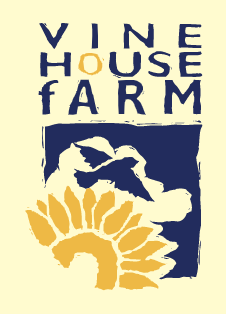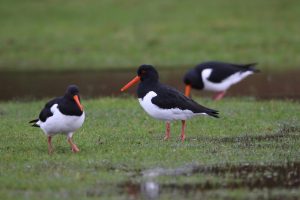
While the north west keeps getting a soaking we have been enjoying the lovely autumn sunshine, just 19mm, or ¾inch, of rain. The month has been a bit warmer than average with a mean temperature of 14.25ºC.

It is too dry out there on the farm, but this is quite normal at this time of year – but this year it seems extra dry. An inch of rain would do the world of good on all of our fields with the exception of the sunflower fields. Rain would help the rape and the oil radish fields grow away from the flea beetles, it would prepare the soil for drilling wheat, and help with the harvest of the potatoes and sugar beet. The sunflower fields that don’t need the rain are ripening off very nicely and our first field should be harvested in the first few days of October.
Many farmers will not be able to lift the sugar beet in this dry weather, as the root will break off and be left in the ground where all the sugar is. There are huge differences in crops from field to field. Some crops will still need bulking up and growth will depend on the type of soil and how much rain each field has received. On the sandy soils in Norfolk, many crops look more like parsnips than big roots of sugar beet. There will certainly be less crop for British Sugar to process this year, and they have recognised the problems and are delaying opening two of its four sugar beet processing plants – Bury St Edmonds in Suffolk and Wissington in west Norfolk – until early October.
In contrast to last year, potatoes will be in short supply this year due to the exceptionally dry and hot weather we have had. As quality is everything these days, we have decided to irrigate our potatoes two or three days before we lift them. This means the soil will help to cushion the potatoes as they go up through the harvester and minimise the bruising. A bruise is a dark inedible patch under the skin which devalues the potato – quite simply because they’re not so nice to eat. It will be more bother and more cost, but if we have a nice bruise-free sample they could be worth £50/tonne more than a bruised sample.
As a farmer, if we want to sell any of our produce to a reputable firm we have to be inspected annually, by a not-for-profit organisation called the Assured Food Standards. Their logo is the little red tractor that you can see on most British food items that you buy in shops. The Red Tractor farm assurance scheme covers all sectors of agricultural production from arable crops, fresh produce, dairy industry and livestock production. The inspector will look at a wide range of criteria and require written proof that we have adhered to the required standards. These include water management, crop storage standards, chemical usage, staff training, traceability, environmental protection and contamination control, and animal welfare along with many other areas.
If we have any non-compliance we then have 28 days to correct any issues. British farmers have some of the toughest regulations in the world to adhere to, ensuring consumers are safe and have great quality food available to them.


Birds are moulting at this time of year. When they are moulting they cannot fly as fast as when they have a full set of wing feathers so they tend to keep under cover. Their wing feathers moult at the same time on both sides and lose the same feather so the growth of the new feathers are synchronised.
It is nest box cleaning time again and I have cleaned several out, but in doing so I was also pulling out lots of insects. Here we are erecting bug hotels around the farm, and I am pulling insects out of nest boxes which could easily be bug homes. I’m now thinking that I should erect a new bird box beside the old one and leave the bugs alone. Next year I should do the reverse by cleaning out the old nest box that acted as a bug hotel for bird use and convert the second box into a bug home.
Migration has been taking place over the last two months but most of us don’t get to see this happening. The best place to observe migration is at the coast – if the wind is right birds can be seen flying into land from the sea. We’ve already seen the arrival of the first Pink Footed Geese on the Norfolk coast.
All our local Swallows left us by 10th September, but I was seeing other Swallows and House Martins until 23rd September. I haven’t seen any after that date but there have been a few reports of them since then – have you seen any later ones and did any have three broods? Please let us know your findings.
In the 1970s and 1980s, Swallows or House Martins were seen until the middle of October, however they migrate south earlier now, because they can’t find enough food here. Over in the West Country, I expect Swallows are still around and I remember when in Lancashire, where there are plenty of cattle, seeing Swallows around during early October.
Wood Pigeons are still nesting and for those of you that have a garden pond you will probably have noticed that they are coming to drink quite often, that is because they are still feeding young, some pairs will have young in the nest and others will be feeding recently fledged young. I can’t think of any of our terrestrial birds that don’t feed their young for a week or two after they have fledged. Some of the sea-birds such as Puffins, Gannets and Shearwaters have to fend for themselves when they leave the nest. Just imagine coming out of a burrow, never having seen the sea and you have to go underwater to catch fish for your first meal. Slightly easier when there are plenty of young, inexperienced fish around but it still must be quite a task.
My 10 month old granddaughter enjoys watching the Wood Pigeons in our garden. They come for a drink at the water feature, which is 15 feet away from the window. As youngsters we are innately interested in wildlife. As we get older we get distracted by other interests. As grandparents, I feel it is our duty to show our grandchildren how amazing wildlife is. It is so important to show them now, as they are the guardians of the future. I hope my granddaughter’s fascination with birds and wildlife continues.
Talks & Events
20/10/18: Cheshire Wildlife Trust AGM, Quarry Bank Mill, Wilmslow
30/10/18: Royston Wildlife Group Royston Town Hall
1/11/18: Countryside Restoration Trusts 25th Anniversary, The Royal Geographical Society, London
2/11/18: Leicester Photographic Club Clarendon Park, Leicester
8/11/18: Deben Agricultural Society, venue TBC



